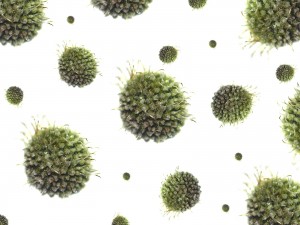 A new study suggests that the HPV vaccine may be protecting immunized teens and young adults from Human Papillomavirus (HPV) infections as well as those who were not vaccinated via a phenomenon known as community immunity (or herd immunity).
A new study suggests that the HPV vaccine may be protecting immunized teens and young adults from Human Papillomavirus (HPV) infections as well as those who were not vaccinated via a phenomenon known as community immunity (or herd immunity).
Promising data showing a significant reduction in certain HPV strains for both vaccinated and unvaccinated women recruited from two community clinics in Ohio four years ago comes as a pleasant surprise to researchers. The study lead by Dr. Jessica Kahn at the Cincinnati Children’s Hospital will appear in the August 2012 journal issue of Pediatrics. The study shows a near 70% reduction in HPV infection for those who received the vaccine and 50% in unvaccinated individuals after four years.
The theories behind community or “herd immunity” are based on the idea that once a significant proportion of a population is vaccinated, the protective benefits of the vaccine are extended throughout that community, even to those who have not or can not be vaccinated. Two examples where community immunity thresholds have been achieved through vaccine in modern medical history are against polio and smallpox.
The Human Papillomavirus causes virtually all cases of cervical cancer and genital warts. According to the Centers for Disease Control (CDC), more than 20 million people in the US are infected with HPV, with 6.2 million new cases reported each year. HPV remains the most common sexually transmitted infection with more than 30 known strains. There are currently no treatments for HPV infection.
The HPV vaccination program was first introduced in 2006 with the Gardasil quadrivalent vaccine, that protects against four HPV strains (HPV-6, -11, -16, and -18). The strains HPV-16 and -18 have been shown to significantly increase the risk of cervical cancer. Currently, there are two vaccines approved for use by the Food and Drug Administration (FDA), Gardasil by Merck and Cervarix by GlaxoSmithKline. Cervarix also targets the HPV-16 and -18 strains.
Participants in the study lead by Dr. Kahn received the Gardasil vaccine. More than 70% of all cervical cancer cases and 90% of genital warts cases have been linked to the one of the HPV-6, -11, -16, and -18 strains.
Although the results of the Cincinnati Children’s Hospital study offer great promise, future studies are needed to confirm the observed protective effects in a larger and more diverse population. Dr. Kahn’s study followed a small group of approximately 400 teens and young adults in two areas of Ohio who consisted of mostly African American and non-Hispanic descent.
The proportion of a population needed to achieve the community benefit of a vaccine depends on the severity of the disease, the ability of the vaccine to protect against the virus, and the mode of transmission. No vaccine can offer complete protection. Cervical screening or pap smears remain the first defense for early detection and prevention. It takes several years for community immunity to develop, and the HPV vaccine is only 6 years old. It is nonetheless exciting to see an effect of the vaccine so soon.

